It was a long awaited plan to trek to the Gomukh glacier. My youngest son and I were very excited about spending a few days of Navratri at Gangotri and Gomukh. 2 other friends, a father and son duo also joined us.
We landed at Haridwar on Mahalaya Ammavasya. The city was extremely crowded. The local taxi driver told us that people from all over India came to Haridwar to take a dip in the river Ganga.
We were excited and went to see the evening Ganga Aarti at Har ki Paudi.

Post this some local people asked us if we would like to do Annadanam and we immediately agreed. They asked us to distribute plates of Poori,Halwa, and Chole to 50 people for Rs. 1000.

The next morning after a wonderful cup of tea from a local vendor we set out for Harsil. We were told that the journey could take upto 10 hours.

On the way to Harsil we stopped at the Gangnani hotsprings for a dip.

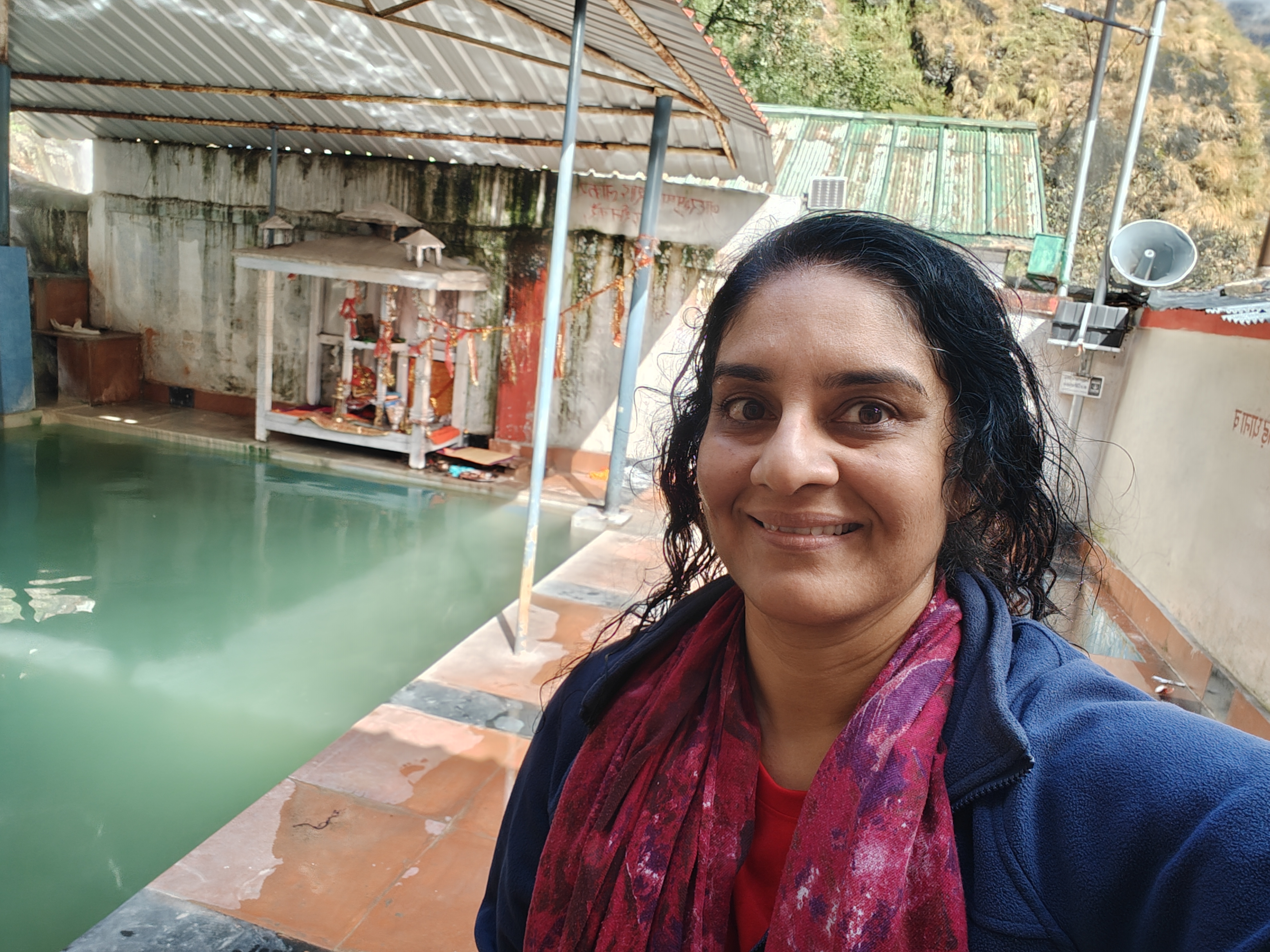

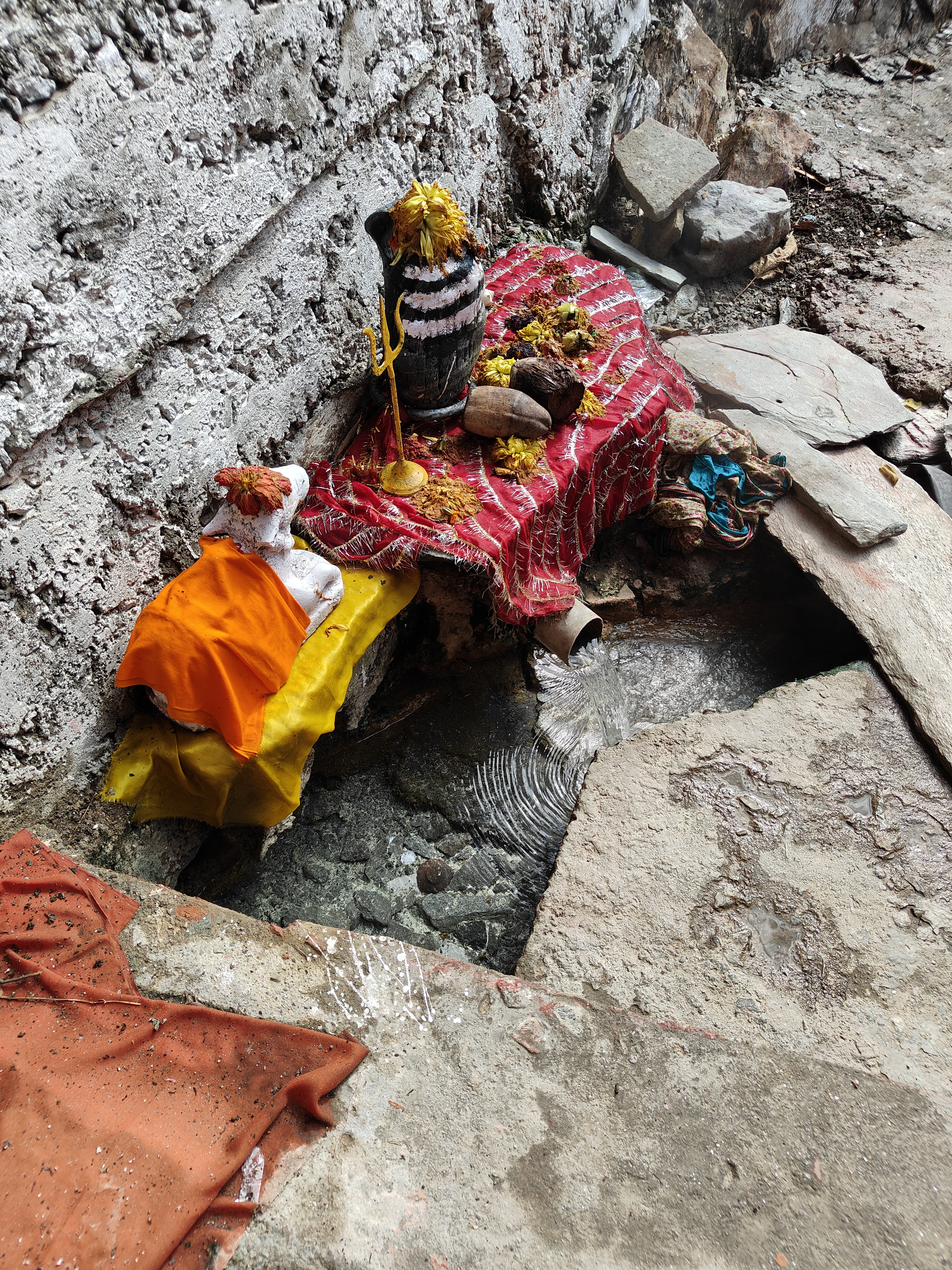
The pujari at the Gangnani hotspring said he is available at the temple through the year and asked us to visit him on our next visit there.
By 4.30 in the evening we reached the beautiful Sunder Homestay at Harsil. In the midst of an apple orchard, the homestay offers wonderful views and good food.


That evening we also spent some time by the banks of the Bhagirathi river which flows just about 200 metres from the homestay.
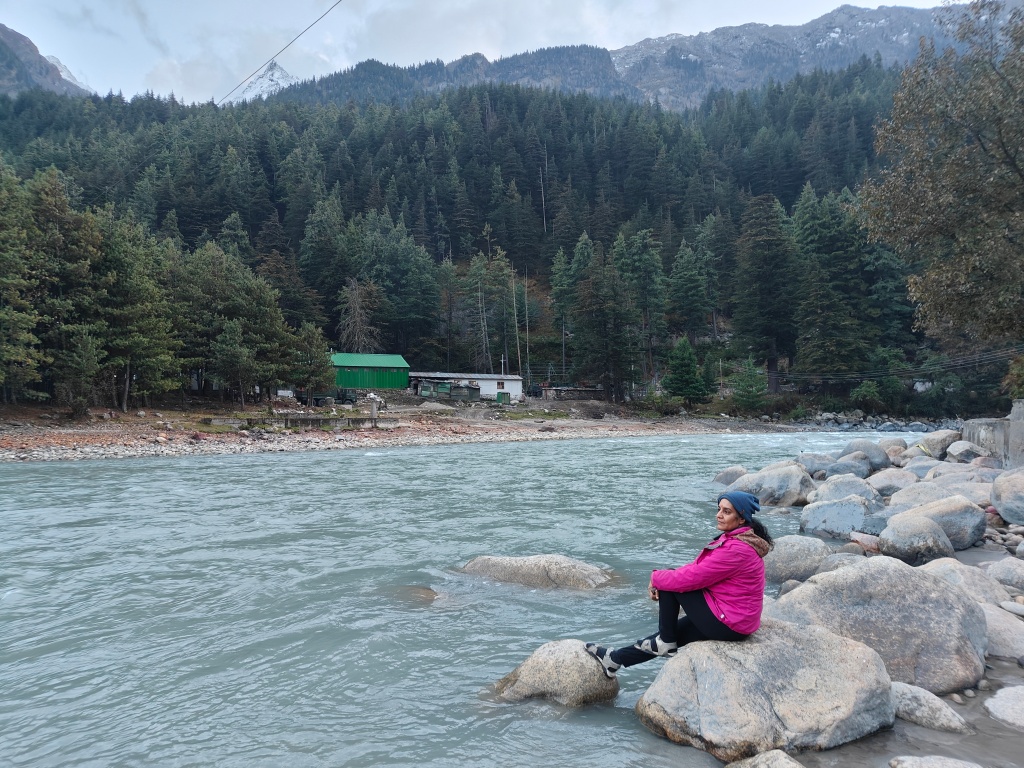
Later we visited a local Shiva Mandir. The pujari had met my son and his friend in the evening and insisted that the boys attend the evening aarti. The aarti was a beautiful experience. The pujari then asked us to sit down and talk to him for a while.
When we told him that we planned to trek to Gomukh, he told us that we must focus on the journey and not the destination. He said that he believed the weather could be uncertain during Navratri and insisted that we should not take any chances.
It felt weird and felt like a message from the divine. It rained a lot that night.
The next morning we started after breakfast to do our first trek at Gartang Gali in the Neylong region. This was part of the old Indo China trade route. This had been closed during the Indo-China war of 1962 and reopened to the public just a couple of years ago.

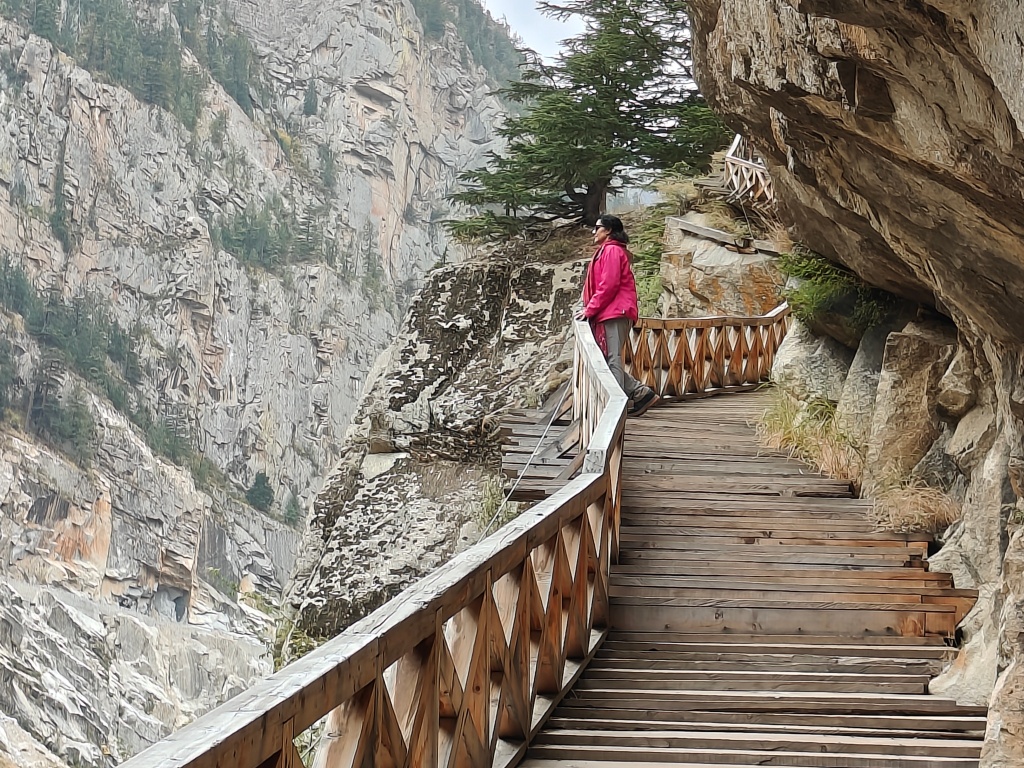
It took us 2 hours to complete the Gartang Gali trek. It was an exhilarating trek.
We then started for Gangotri. We reached there around lunch time and met our trek operator Sandeep and guide Abhishek. My son and I decided to take a short nap. When we woke up, we saw that it was snowing in Gangotri.

It was the first time both of us were seeing snowfall. We were very excited. But it was also a reminder that trekking to Gomukh may be difficult
That evening we decided to visit the Gangotri Mandir. It was a cold wet evening and there were hardly any pilgrims.
The main priest of the temple asked us where we were from. He was very happy when we mentioned Bangalore. He happens to be a mechanical engineer who had participated in a Science festival in Mysore where he received a medal from Late President Shri Abdul Kalam. He had fond memories of the state and was delighted to have pilgrims from there.
He told us that we had come on an evening when most others chose to stay indoors. Hence we were lucky to have a very good and almost personal darshan of the Goddess.

The constant rain and snow meant that the Gomukh trek could not be done. The next morning, the local authorities also cancelled the permits for the day.
We met several people who were stranded in Gangotri. Most of them hoped that the weather would improve and permits would be issued the following day.
The locals warned us that the weather might be extremely difficult for us at Bhojbhasa, the base camp for Gomukh. Hence we decided to look at other options.
We decided to do a short trek in Gangotri itself and then move to Harsil.
We started with the Bhagirath Shila, the rock on which Bhagirath did penance to bring the river Ganga to earth.


As we started our short trek we came across the Kedar Ganga river

We then visited the Suryakund and Gaurikund. While there are many stories and legends about the Suryakund and Gowri Kund, the earliest mention of these is in the Skanda Purana. It is stated there that the river takes its first turn south and the Surya kund and second southward turn at the Gowrikund


At the Gaurikund we also saw the footsteps of Mata Parvati.
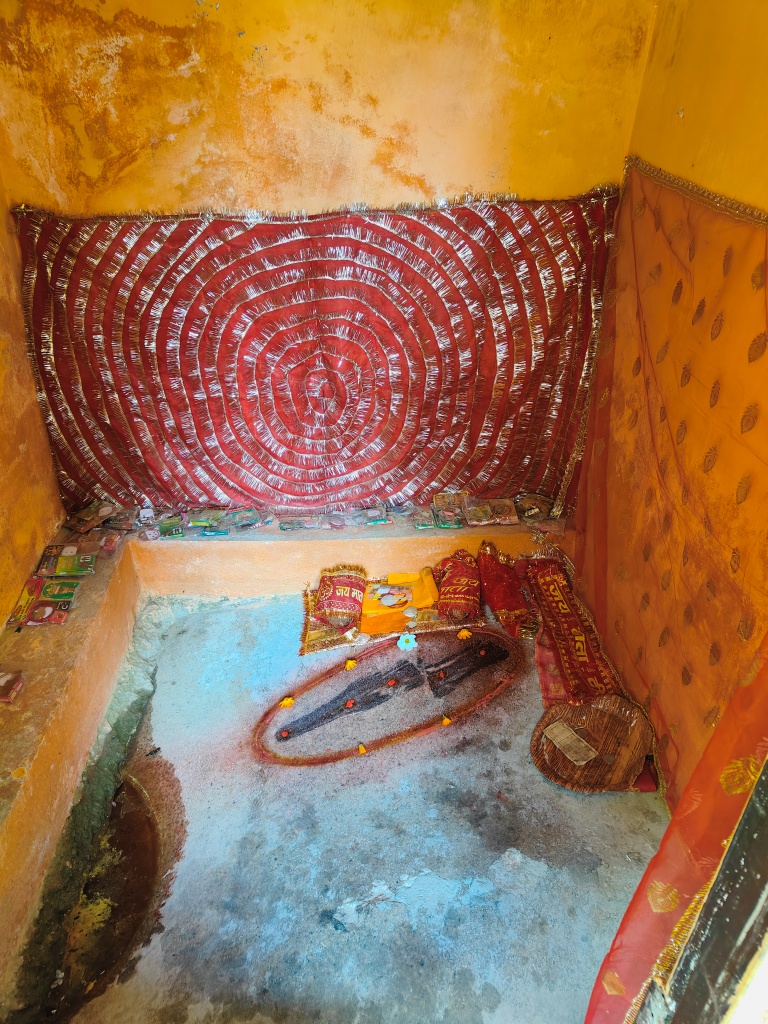
Opposite the SuryaKund is the art gallery which has some beautiful pictures of the Gangotri region.

We continued walking to the Pandav Gufa. It is believed that the Pandavas stayed in this cave during their years in the Himalayas.

Today an elderly Sadhu lives at the Pandav Gufa. He has been living in this cave for nearly 20 years. Every visitor to the cave is offered a glass of coffee as Prasadam. “Why coffee?” We asked him and he said, “after a long walk people enjoy a cup of coffee. Prasad should be something we like.”

We started walking back. It was a 3 hour trek. On the way back we stopped at the Kailash Sangam, the point where the Kedar Ganga river meets the Bhagirathi.
Walking down to the sangam, we realised that this was the exact spot we could see from the balcony of the room we were staying in.
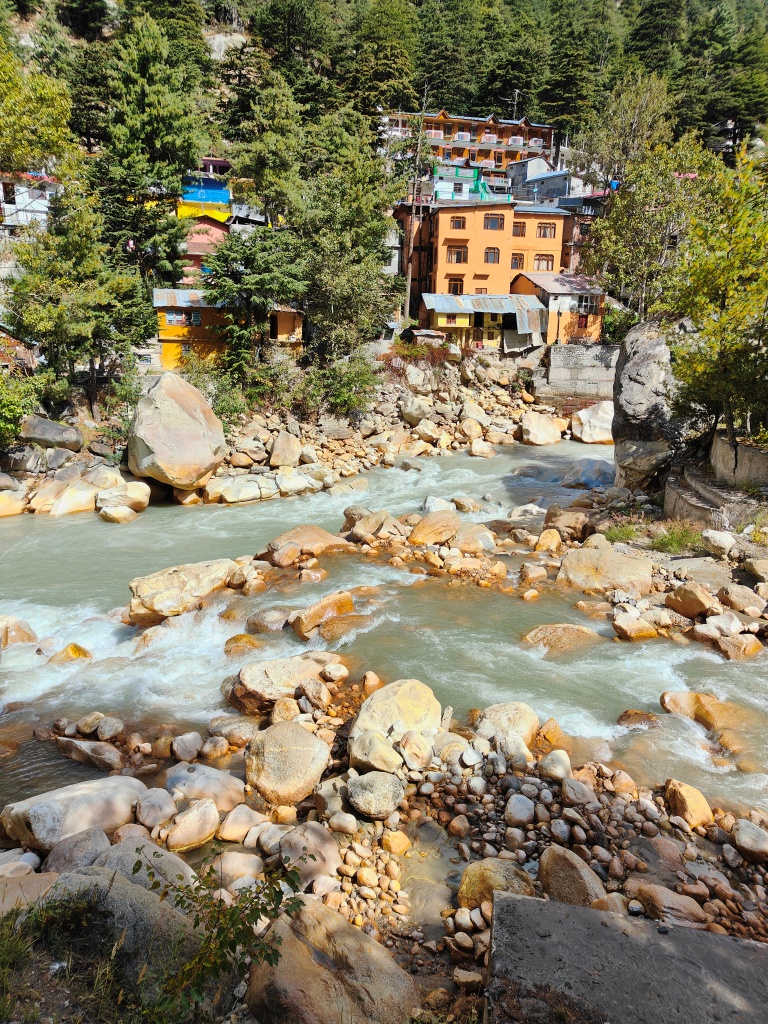
On the way back, I stopped at the Gangotri temple for another darshan.

Several members from a nearby village had assembled and performed a local dance. It was very similar to the ‘kavadi’ of Tamil Nadu.

Post lunch our trek operator arranged a shared cab to drop us at Harsil.That evening we were back at Sunder Homestay.
That evening we decided to do a short trek to Bagori village. We had to cross three small bridges to reach Bagori village. There is no vehicular access to this quaint and beautiful place. Bagori has many old wooden homes. Most villagers move to warmer places like Uttarkashi in the winters.



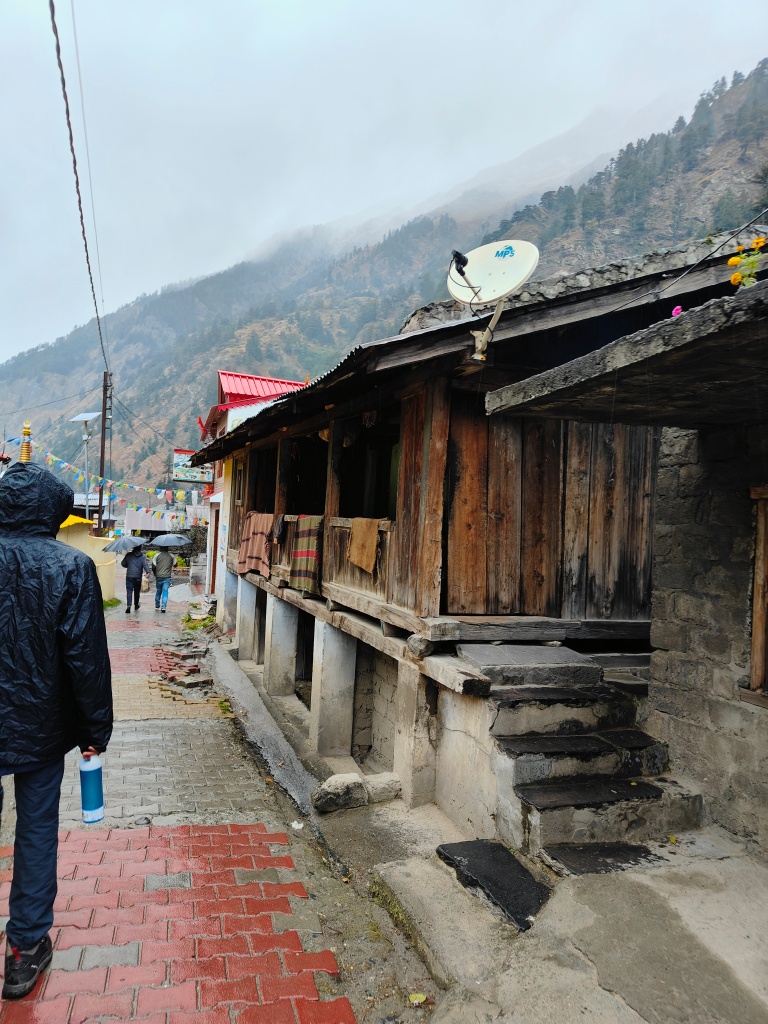
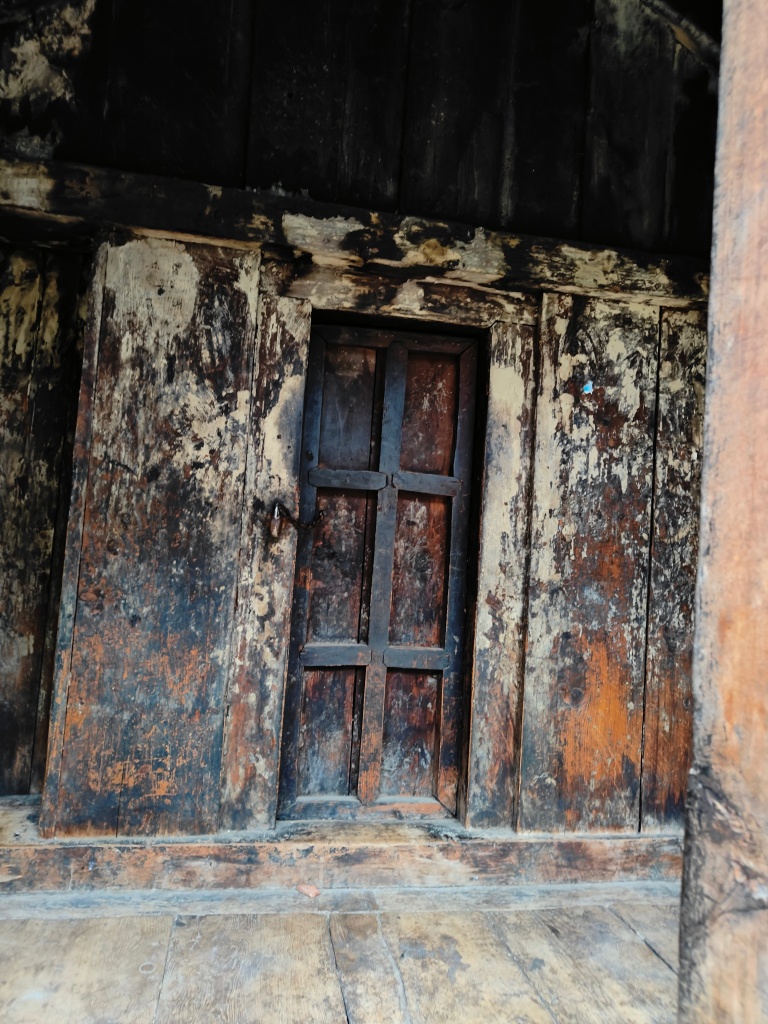

We purchased a shawl and some apples from Bagori. There are plenty of apple orchards in the region and the apples are amazing.
After discussions with the staff at Sunder Homestay and a local trek guide, we zeroed in on the Saat Tal trek for the next morn
Post breakfast we started for the trek. We drove down to Dharali , a village about 3 kms from Harsil. Our guide Raj was an enthusiastic young man, a student of history who told us lots of stories about the region and its people. Raj belonged to the Neylong valley and his family was among those who had to vacate their homes and move to Bagori post the Indo- China war in 1962.
We first went to the Kalp Kedar temple. Only the Gopuram and top portion of the temple’s door are above the ground. The rest of the temple is submerged on the banks of the river Bhagirathi.

Raj told us that this region was prone to landslides and glacial lake overflows. The region originally had over 200 temples. Over time, these have either been destroyed by floods/landslides or submerged. He even shared an old picture of the Kalp Kedar temple to show us how the two other domes had been washed away.

The Kalpa Kedar temple’s gopuram reminded us of Kedarnath. When we mentioned it, Raj told us that this temple was commissioned by Adi Shankara who visited Gangotri before heading for Kedarnath. Again, I was amazed with all that Adi Shankara achieved in his 33 years. We spent quite some time talking about him
We then started climbing to Saat tal. Saat tal is a series of 7 interconnected lakes. The top 2 are believed to be high up in the hills. Local legend has it that anyone who makes it to the 7th lake does not come back. So the trek is only upto the 5th lake.

The first part of the trek is through the village. It was wonderful to see villagers going about their daily routine. We were amazed to see them carrying large baskets of apples up the steep slopes.
We even passed by the local school. Raj told us that most village schools had just a handful of children. Often these were the wards of Nepali labourers who worked in n the apple orchards. Most locals preferred to send their children to schools in Uttarkashi. Raj said that the local schools were good and he himself had studied in one. One of his classmates, he said had even managed to join IIT.
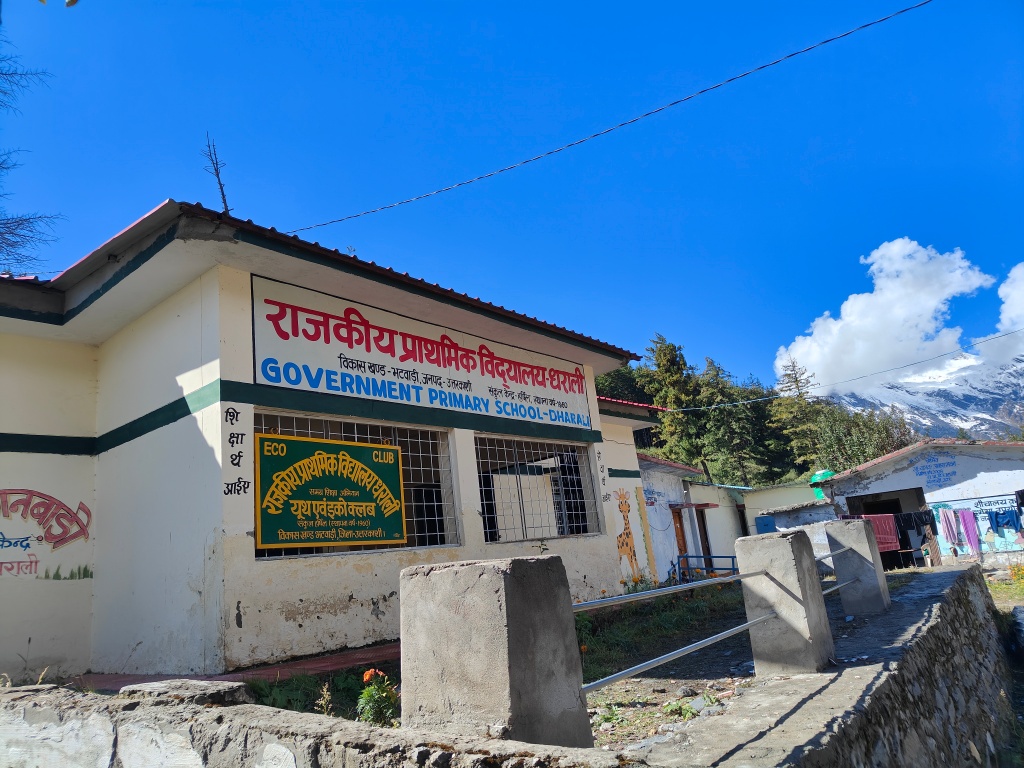
After crossing the village, we entered the forest stretch. It was beautiful.

Interestingly a local dog accompanied us for most of the trek.

We reached the first lake after about one and a half hours of trekking. It was a small but beautiful lake surrounded by pine trees.

The forest gave way to the meadows and the view was brilliant.
A steep climb from the first lake took us to the second and third lakes. These lakes were quite dry. In fact the second lake looked just like a dry patch of land.


The fourth and fifth treks were a short distance away. The views just got better with every step.



There was very little water in the fourth and fifth lakes as well. Raj told us that since these were glacial lakes there was the danger of them overflowing and impacting villages. People let nature take its course and did not try to store water in these lakes.
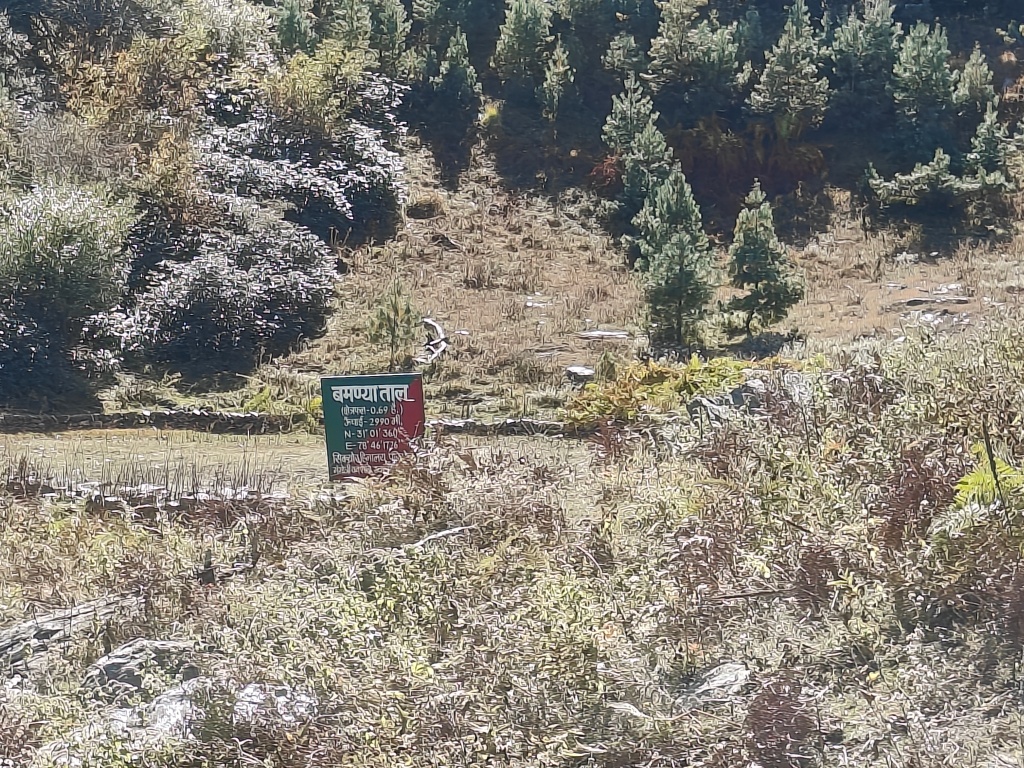
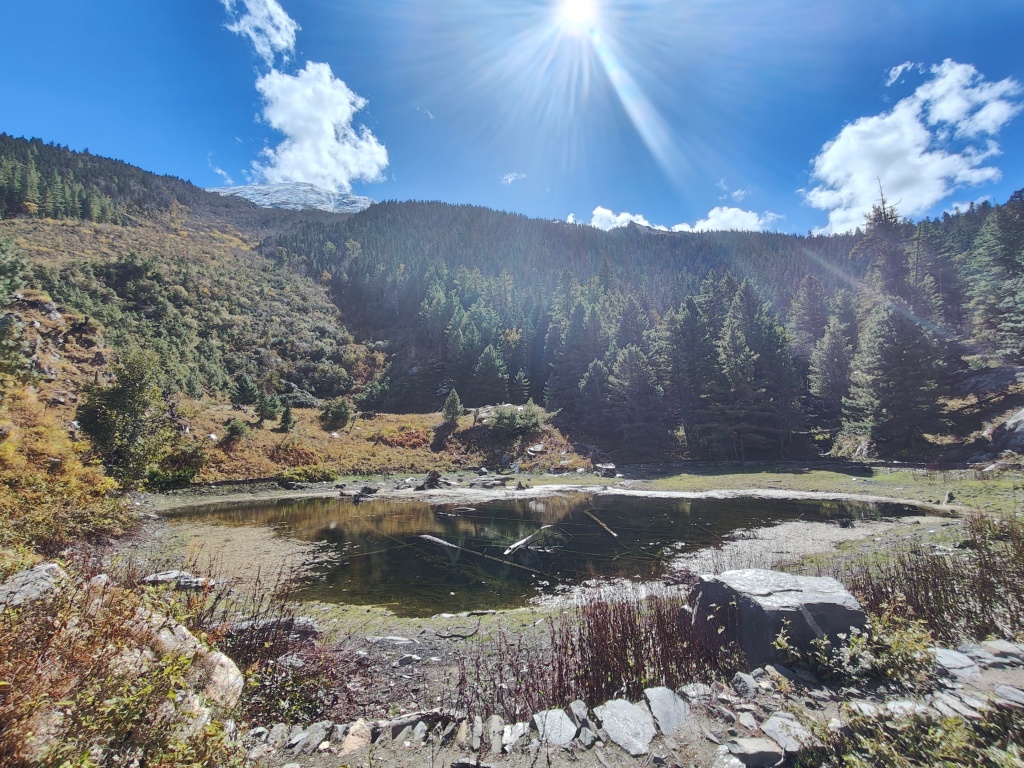

It was a steep downhill climb and it took us nearly 2 hours to climb down.It had been a great trek with the most amazing mountain views.
After a late lunch at Dharali, we went to Sunder homestay to pick up our luggage. That evening we checked into the beautiful resort ‘Nelangana’. Overlooking the river, it was a very serene and beautiful place.
We spent the morning by the Bhagirathi river. We met several foreigners staying at Nelangana resort. Many of them were part of a ‘yoga camp’. It was beautiful to see them do yoga by the river.
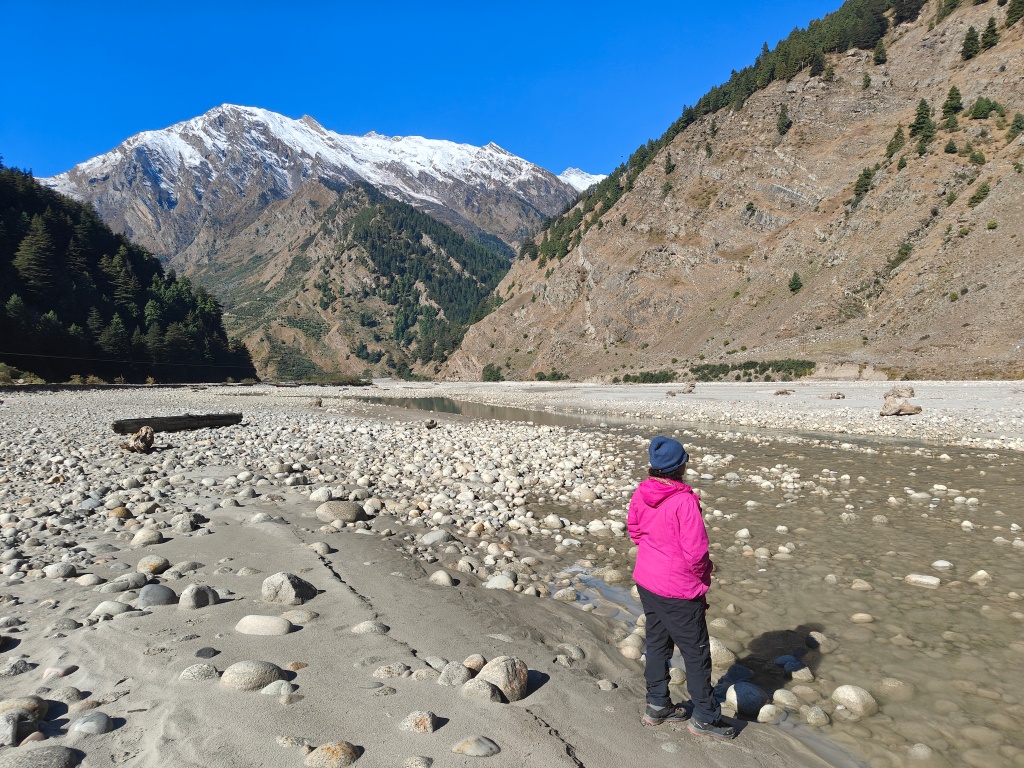

While it was an exotic destination for us, it was just another day at work for the locals. We spotted these children playing by the riverside while their parents seemed to be loading mules a little distance away.

Later we went rafting in the Bhageerathi river. River rafting was introduced in Harsil in April 2023. The 6 km stretch has level 2 rapids. It is extremely scenic with virtually no crowds.
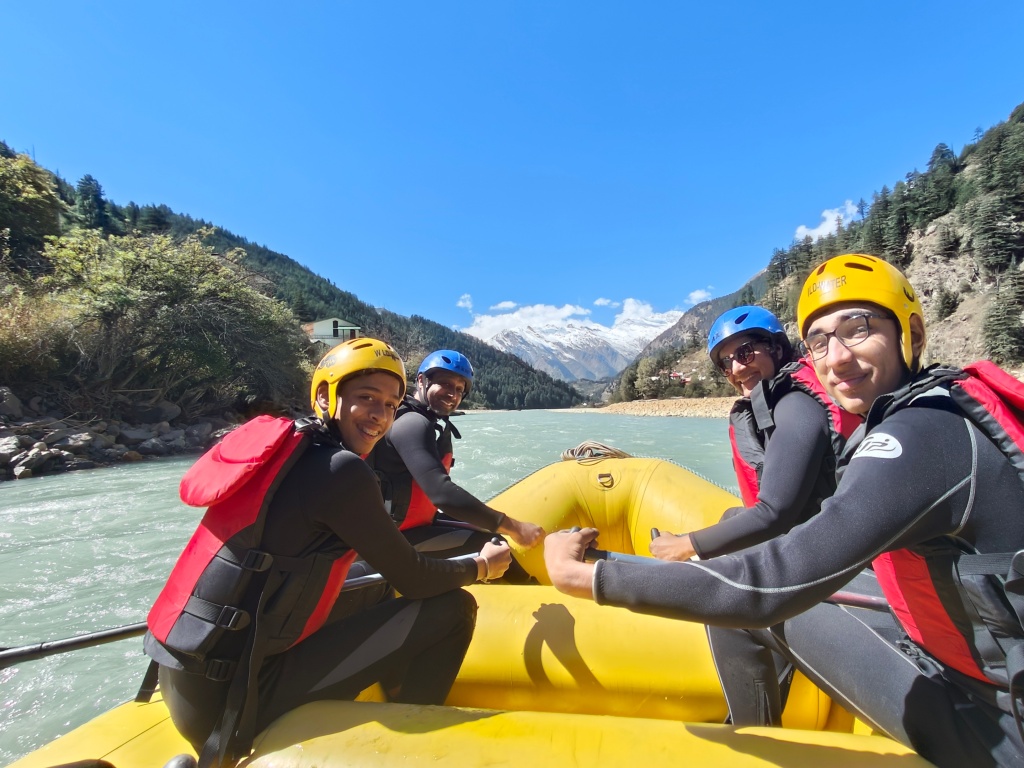

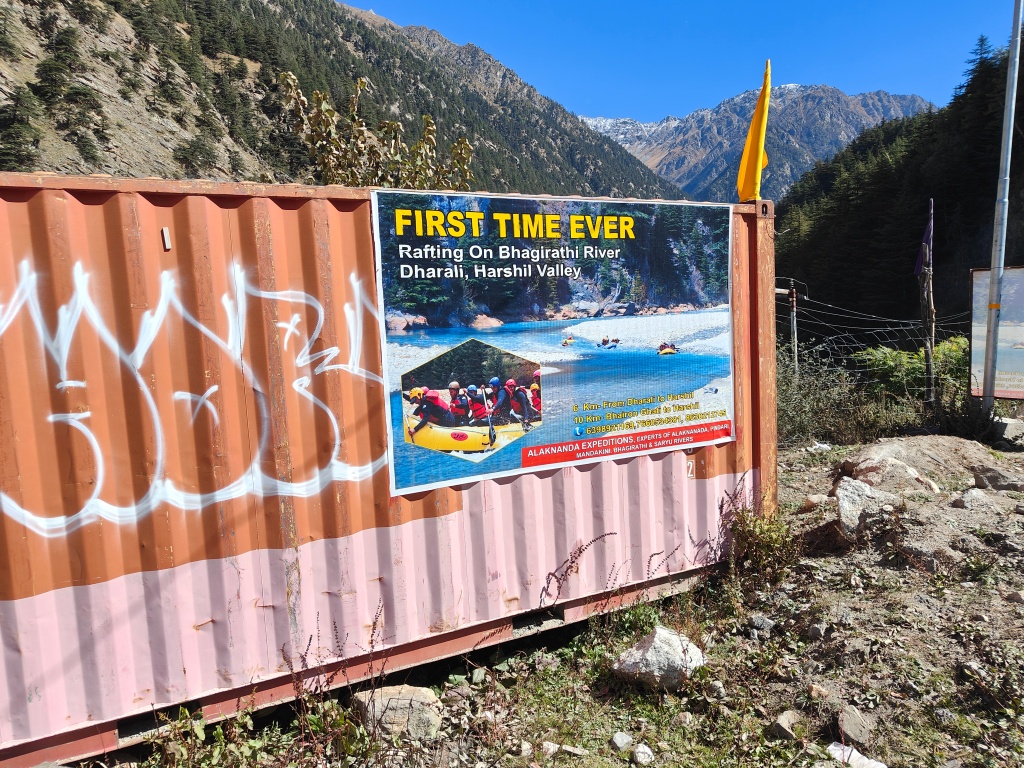
Post rafting our friends did another short trek to Lama top.
My son and I decided to take a break and explore Harsil by foot. We walked around the market place and stopped for tea and maggi at a local joint. We also visited the Shiva temple whose Pujari had warned us against taking any risks.
That evening we went to Mukhwa village. Mukhwa is the winter seat of the Deity of Gangotri.

On our way to Saat tal we had seen this temple from across the river. Our guide Raj told us, ‘Mata khud ko paar nahi karti’. The deity Ganga never crosses the river Ganga. Hence in winters she travels from Gangotri to Mukhwa along the mountain path and returns in to Gangotri in summer o the same route in ‘palki’ or palanquin.

Like Bagori, Mukhwa too retains an old world charm. It has many beautiful wooden homes. Time seems to stand still in these beautiful Himalayan hamlets.

We also saw the mystery waterfall of Mukhwa. Raj showed us this waterfall, which he said was the main source of water for the people of the village. However, he pointed out that the source of this waterfall was not known. It was a mysterious waterfall and the water emerged from the jungles.

We spent some time talking to the Pujari at the temple. He was eagerly awaiting Mata’s winter stay at his temple. We also got to witness a glorious sunset.
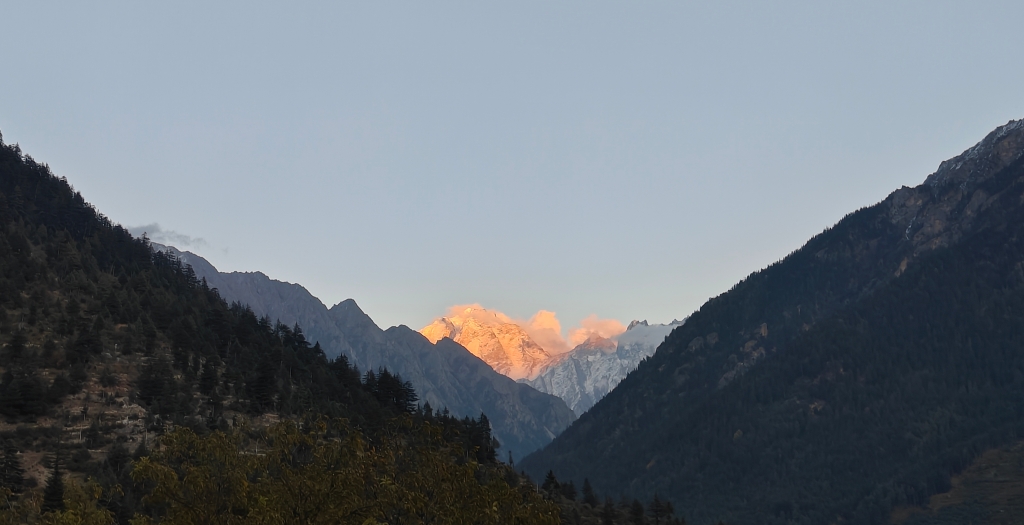
On the way to Lama top, Raj had told our friends about the ‘Hari Shila’ from which the town Harsil got its name. The rivers Bhagirathi and Jalandhari meet at Harshil. Both the rivers were ferocious and to soften their flow, Lord Hari appeared as a ‘Shila’ at the Sangam of the two rivers.
Raj had told them that the Hari Shila could be seen from the Laksmi Narayan temple at Harsil. We had seen this temple on our way to Bagori and quickly decided to go there. It was quite dark but we managed a darshan at the temple and a glimpse of the Hari Shila.


Satisfied we returned to our rooms. We had to start early the next morning.
On our way to Dehradun, we stopped at the Kashi Vishwanath Mandir at Uttarkashi. We were fascinated to learn that it is believed that this temple will be the home of Lord Shiva in the second half of Kaliyuga, when the Gangetic plain and the town of Varnasi may not exist.

Right opposite the main shrine is the Mata mandir which houses a Trishul that is nearly 18 feet high. The Trishul is believed to be over 1500 years old. Locals say that the Trishul moves when one touches it with a finger but does not budge if one tries to push it with force.
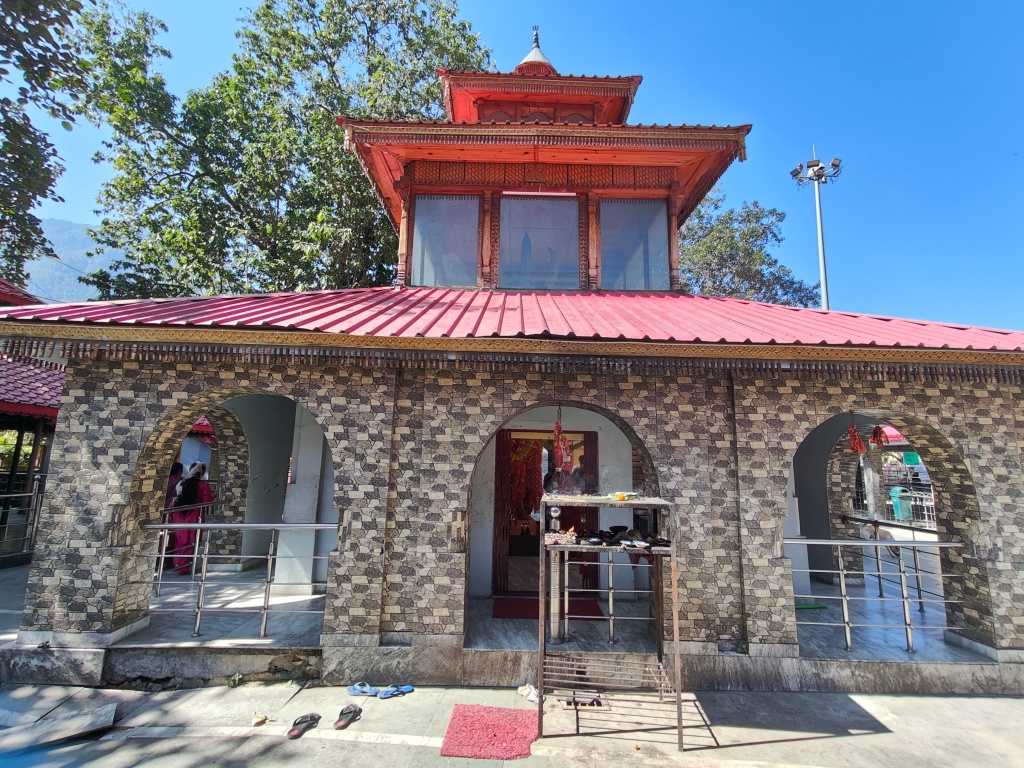

After a wonderful darshan we left for Dehradun. Our driver had warned us about unexpected and long traffic jams along the route. But we were totally unprepared for this traffic jam caused by 5000 sheep.
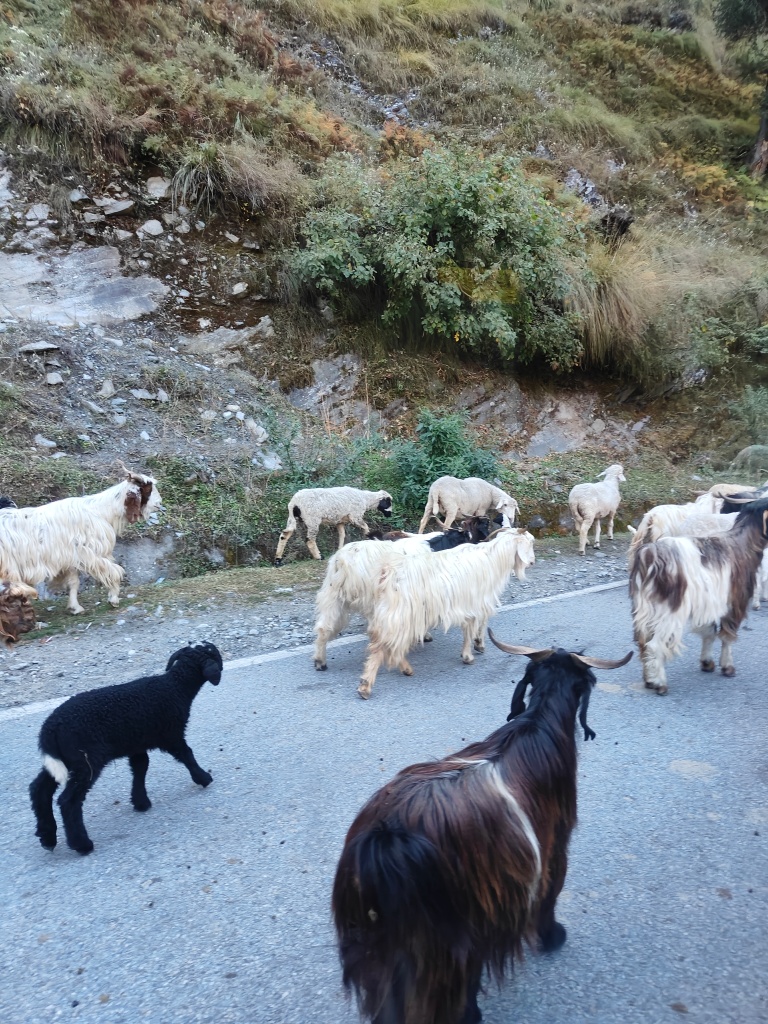

That evening we reached Dehradun. It was time to head home. We had not been able to make it to our planned destination,Gomukh. However we had no regrets. It had been a wonderful journey and an enriching experience.